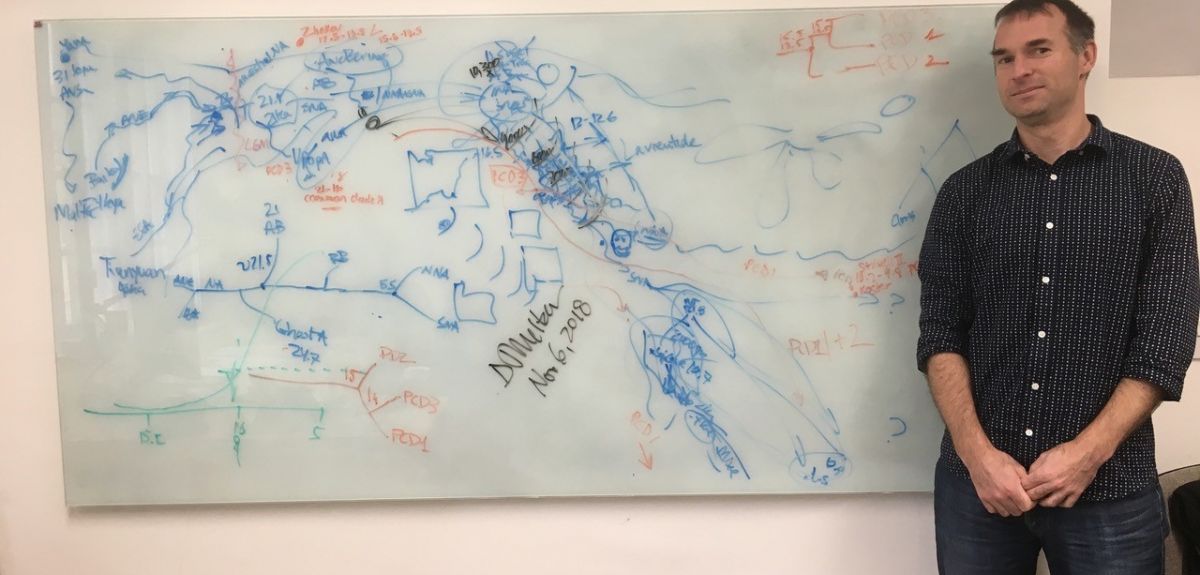
America’s very special relationship - with dogs.
Twenty three thousand years ago, canines travelled to the New World with the First Americans
When President Biden took up residence last week in the White House, Major and Champ became the latest dogs in a long history, to follow their people on an American journey. Research published this week reveals that the relationship between not just the first Americans’ but everyone’s best friend was deeper than previously thought – 23,000 years’ deep, in fact.
According to the new research, from an international team of archaeologists and geneticists including Oxford’s Professor Greger Larson, dogs travelled alongside the first people who made the journey across the Bering straits to the Americas.
The research reveals dogs spread throughout the Americas, along with people, and developed completely separately to their European cousins
The research reveals dogs then spread throughout the Americas, along with people, and developed completely separately to their European cousins. When the first European settlers arrived across the Atlantic, bringing their dogs of course, the indigenous American dogs were genetically distinct. And, as with many indigenous peoples – the indigenous American dogs all-but died out, when confronted with European people and dogs.
Today, there is little trace left of the animals who braved the long journey during the last Ice Age, to accompany their fellow human travellers into a new land.
As with many indigenous peoples – the indigenous American dogs all-but died out, when confronted with European people and dogs
According to the study, ‘The first people to enter the Americas likely did so with their dogs. The subsequent geographic dispersal and genetic divergences within each population suggest that where people went, dogs went too.’
Professor Larson says, ‘We found a very strong correlation between the pattern of ancient dogs’ genetic diversification and the genetic signatures of early Americans. The similarities between the two species is striking and suggests the shared pattern is not a coincidence.’
He adds, ‘We knew dogs were the oldest domesticated species, and these findings now suggest that the initial process of domestication began around 23,000 years ago in north-east Siberia. From there, people and dogs moved together east into the Americas, south towards east Asia, and west towards Europe and Africa.'
We knew dogs were the oldest domesticated species, and these findings now suggest that the initial process of domestication began around 23,000 years ago in north-east Siberia
Professor Greger Larson
According to this week’s report, ‘The convergence of the early genetic histories of people and dogs in Siberia and Beringia suggests that this may be the region where humans and wolves first entered into a domestic relationship...this process likely began between 26,000 and 19,000 years ago, which precedes evidence for the first unequivocal dogs in the archaeological record by as much as 11,000.’
This is important research, not only for what it says about dogs’ arrival in the Americas, but also for what it reveals about people. And the report states, ‘Since their emergence from wolves, dogs have played a wide variety of roles within human societies, many of which are specifically tied to the lifeways of cultures worldwide. Future archaeological research combined with numerous scientific techniques, will no doubt reveal how the emerging mutual relationship between people and dogs led to their successful dispersal across the globe.’
This is not the first time Professor Larson has produced research about ancient dogs (and Dire Wolves). Does this new study reveal a preference for canines?
Imagine what society would be like if we had not formed mutually interdependent relationships with so many other domestic plants and animals. And it all started with dogs
Professor Larson
‘I grew up with dogs, and I always interact with them when they walk by’ he says. ‘Dogs were the first species to enter into a mutualistic relationship with us. It was a key shift in the evolution of our species...It is amazing how much everything began to change after that.
'For the vast majority of our species’ history we travelled alone and made a tiny impression on the earth’s ecology. Now there are eight billion of us and we depend on a range of domestic plants and animals for the maintenance of our huge global population. Imagine what society would be like if we had not formed mutually interdependent relationships with so many other domestic plants and animals. And it all started with dogs.’
The article in PNAS is available here: https://www.pnas.org/cgi/doi/10.1073/pnas.2010083118